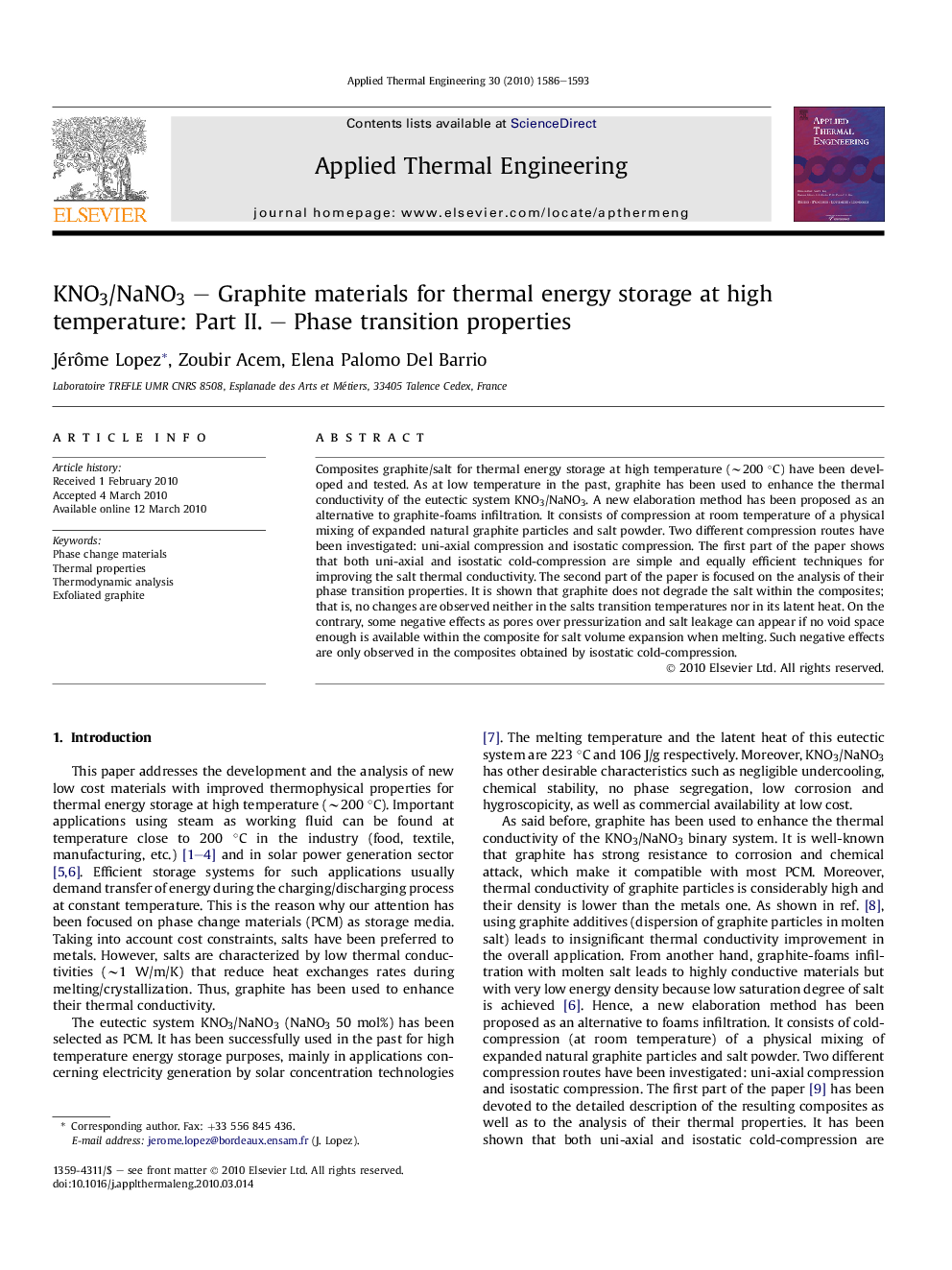| Article ID | Journal | Published Year | Pages | File Type |
|---|---|---|---|---|
| 648117 | Applied Thermal Engineering | 2010 | 8 Pages |
Composites graphite/salt for thermal energy storage at high temperature (∼200 °C) have been developed and tested. As at low temperature in the past, graphite has been used to enhance the thermal conductivity of the eutectic system KNO3/NaNO3. A new elaboration method has been proposed as an alternative to graphite-foams infiltration. It consists of compression at room temperature of a physical mixing of expanded natural graphite particles and salt powder. Two different compression routes have been investigated: uni-axial compression and isostatic compression. The first part of the paper shows that both uni-axial and isostatic cold-compression are simple and equally efficient techniques for improving the salt thermal conductivity. The second part of the paper is focused on the analysis of their phase transition properties. It is shown that graphite does not degrade the salt within the composites; that is, no changes are observed neither in the salts transition temperatures nor in its latent heat. On the contrary, some negative effects as pores over pressurization and salt leakage can appear if no void space enough is available within the composite for salt volume expansion when melting. Such negative effects are only observed in the composites obtained by isostatic cold-compression.
